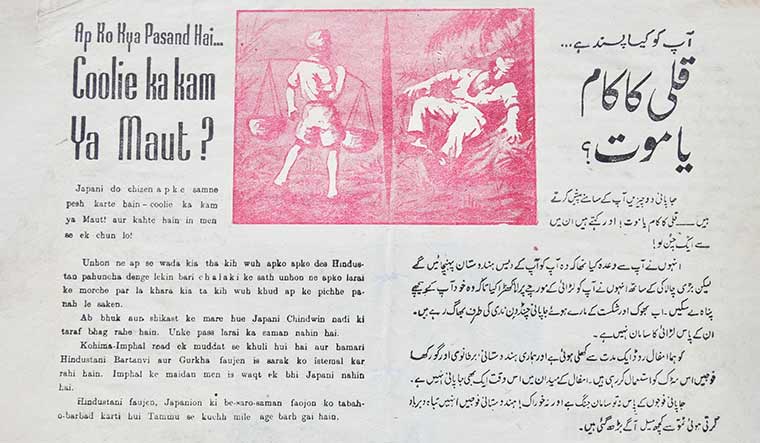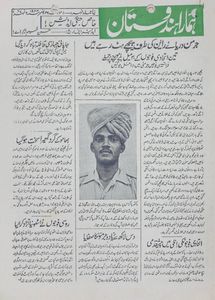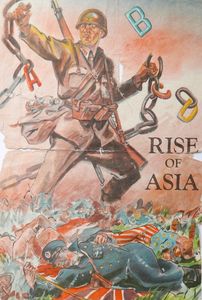IN THE MIDDLE of 1944, when the epic battles of Imphal and Kohima were raging in the east of India, a parallel war was being fought on the margins. Both the Allies and the Japanese were fighting this invisible war for the minds of men. The British Psychological Warfare Division was working full swing to churn out propaganda leaflets directed not just at the Japanese, but also at men of the Indian National Army (INA) and the peoples of Japanese-occupied territories.
It was a herculean task, but the British hoped that their efforts would tilt the outcome of the battles in their favour. The fate of British India was at stake. These leaflets were fired through mortars and airdropped in their thousands over enemy territory. The main objective was to demoralise opponents and make them surrender. While the British were slow to start, the Japanese were well ahead in the game.
Unlike in World War I, India now had to contend with a direct threat on its doorstep. This came from the east as the Imperial Japanese Army sliced its way through southeast Asia in December 1941, taking the wholly unprepared British garrisons by surprise. The swift Japanese offensive led to the capitulation of Hong Kong, Singapore and Malaya, and the expulsion of British and Indian troops from Burma. Indian soldiers who became Japanese prisoners of war formed the nucleus of the INA, which gave the British considerable cause for concern and led to a propaganda war directed at Indian troops fighting in Burma.
The Japanese employed propaganda from the very beginning. Japanese propaganda leaflets were inspired by the famous Manga comic art and were produced in colour. Prominent among their Indian leaflet series were satirical caricatures of British prime minister Winston Churchill, US president Franklin D. Roosevelt and Nationalist Chinese leader Chiang Kai-shek. The central message to the Indian target audience was that the British had bled India dry and Japan was the true friend of India.
Leaflets were only one of many propaganda mediums used by the Japanese. Radio broadcasts were made in a number of languages, pushing the Japanese grand scheme of a Greater East Asia Co-Prosperity Sphere. Indian PoWs were recruited as agents to infiltrate the ranks of the Indian Army to spread rumours, affect morale and entreat men to desert their units. These men came to be known as JIFs, or the Japanese-inspired fifth column. To combat the JIFs, the British created their own counter-propaganda organisation called ‘Josh’ groups, which tried to raise the morale of Indian troops.
While the Japanese had coopted the use of propaganda in their overall plans, the British had been slow to follow. British psychological warfare efforts in southeast Asia came about through trial and error. Eventually, the British developed their own propaganda leaflets in a diverse range of languages. Employing the same fundamental principles of demoralising their opponents, they made the imminent defeat of Japan and the Axis powers a recurring theme. Many of these leaflets doubled as surrender passes. They urged the reader to lay down his arms while there was still time and assured him of good treatment as a prisoner of war. A weekly news-sheet titled Hamara Hindustan was also published in Urdu targeting INA troops.
Additionally, the British raised ‘Indian field broadcasting units’ to carry out broadcast and leaflet propaganda specifically targeting Japanese troops. Broadcasts were transmitted over loudspeakers in forward areas and emphasised the futility of fighting the British. Interspersed with these broadcasts were Japanese gramophone records meant to induce a feeling of homesickness.
Soldiers who fought on India’s Burma front are known as the ‘Forgotten Army’. Lesser known is the titanic struggle that was waged for their hearts and minds in the hills, swamps and jungles of northeast India. These forms of psychological warfare were precursor to the present use of information warfare and ‘fake news’. The medium of transmission has changed, but the concepts are still very much the same.
The author is an independent researcher currently focusing on propaganda in World War II.






